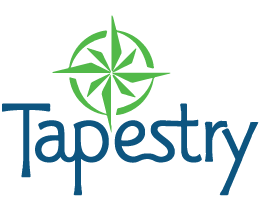EL EDUCATION
EL Education harnesses students’ natural passions to allow them to develop the curiosity, skills, knowledge, and courage needed to imagine a better world and work toward realizing it.
Learning is accomplished through academic, cross-disciplinary learning expeditions, other active forms of teaching and learning, and a challenging and supportive school culture. Learning expeditions inspire the academic skills necessary to make sense of the New York State learning standards.
In the Kindergarten, “Gardening as We Grow” expedition, students explore what plants and animals, including humans need to survive. Buffalo Zoo experts also come to the classroom to share their expertise in animals’ needs and habitats. Students visit a local urban farm and engage in developing Tapestry’s vegetable garden as they “garden as we grow”!
In 2nd grade, students explore our dynamic earth by studying local geologic forms. They learn from the experts from Earth Spirit who both come into the classroom and who lead them on various geologic adventures in WNY. Students work in groups to become experts about Niagara Falls, the Tug Hill Plateau, the Niagara Gorge, the Adirondack Mountains and various other New York State Geologic features. Finally students create 3D landform sculptures and a collaborate New York State Geological Attractions Field Guide, which are showcased at the Audubon Society.
In the 1st grade, students explore multiple topics as they become experts on forest animals. They learn about animals from the experts at the Buffalo Zoo. They research animals to learn more more about their life cycle and adaptations. Students work in collaborative groups to write a nonfiction book about their chosen forest animal. The first graders participate in STEAM activities as they learn how humans have been inspired by nature to solve problems. Students present their books and animal adaptations projects at their animals showcase.
In the first grade “Appley-Ever-After expedition, students explore the life cycle of plants and the basics of economics through the lens of an apple orchard. Understanding that a farmer provides a good and services, we as consumers purchase that good to get the things that we need and the things that we want. Students also wrote how to pieces, learning to sequence their writing beginning with the sequence of a plant’s life cycle. Students also learn from student entrepreneurs at Tapestry Charter School as they explore the differences between goods and services.
In 3rd grade, students explore the questions “Where does our water come from?” and “What happens when people don’t have access to clean water?” in their expedition called “Access to Fresh Water”. In this expedition students explore the importance of having fresh drinking water, both globally and locally. They hear from experts from Reinstein Woods about water conservation and visit the Niagara Power Vista and Niagara Falls to gain appreciation for the power and privilege of having access to fresh water.
4th grade students engage in the expedition “I Like to Move it Move it” to gain scientific understanding about simple machines and an appreciation for the way that they impact our daily life. Students visit the Buffalo Museum of Science to experiment with simple machines. Finally, they engage in the engineering design process as they work in groups to plan and build their own Rube Goldberg Machines.
In 2nd grade, students explore our dynamic earth by studying local geologic forms. They learn from the experts from Earth Spirit who both come into the classroom and who lead them on various geologic adventures in WNY. Students work in groups to become experts about Niagara Falls, the Tug Hill Plateau, the Niagara Gorge, the Adirondack Mountains and various other New York State Geologic features. Finally students create 3D landform sculptures and a collaborate New York State Geological Attractions Field Guide, which are showcased at the Audubon Society.
In 6th grade, students explore their own answers to the questions, “How does history teach us the need for tolerance?” and “How do we use history as a way to prepare for the future?” During this expedition, students read the book The Boy in the Striped Pajamas as they explore how intolerance and stereotyping led to the Holocaust. Likewise, they compare people groups in the United States that are stereotyped today. Students hear from a Holocaust survivor and engage in exercises with the National Federation for Just Communities as they explore their own mindsets. Finally, students take a stand against intolerance and stereotyping in our local community.
In 7th grade students read the book Brown Girl Dreaming as they inquire what it means to perceive the world through the lenses of class, gender and race. This study leads into investigating what it means to be a social activist in Buffalo as they learn about the Constitution and explore historical activists such as Frederick Douglass.
8th grade kicks off “Finding Home” expedition by experiencing a refugee’s plight by partaking in an UN Simulation at the Nardin Athletic Center. Students return to school to read Inside Out and Back Again, a book about a 10 year old Vietnamese girl whose family is deciding whether to flee during the fall of Saigon. In Social Studies, students explored the immigrant experience of multiple people groups in the early 1900s at Ellis Island. Students then team up to interview local New Americans to find parallels in the stories of what it means to find home again, retelling those stories in creative and honoring ways. In crew, students work together to create New Home Welcome Tool Kits for Journey’s End, a local refugee resettlement agency.
Students will be encouraged to look at our city in a different light during this expedition. Students will create an advocacy research guide after researching positive assets found within the communities. Students will study the characteristics of upstanders or people who played lead roles in going against the status quo in Social Studies class, encouraging students to take on these qualities and become advocates in their own community. Finally, students will create an Advocacy Resource Guide for Buffalo New York (modeled after the resources guide in the Other Wes Moore) that they will showcase to the community.
In 10th grade, students explore the answers to the questions “Is the Declaration of Human Rights an effect document?” and “How does one become an activist for human rights?”. In Global class, students walk through the history of human right violations in the 20th century starting with the Armenian Genocide and end with modern issues in Africa. In ELA, students read Persepolis by Marjane Satrapi as an anchor text and participate in lit circles using texts such as Maus, Night, Lost Boy/ Lost Girl, A Long Way Gone, Kite Runner, Sold, and Red Scarf Girl. Finally, students create a product of choice to communicate the solutions to their questions through a public service announcement.
11th graders read the book On Inequality. Economic inequality is one of the most divisive issues of our time. Yet few would argue that inequality is a greater evil than poverty. The poor suffer because they don’t have enough, not because others have more, and some have far too much. So why do many people appear to be more distressed by the rich than by the poor? Students take a look at political districts in Buffalo to explore how economic inequality has affected our community and then become empowered to initiate change.
12th grade Written in Stone: Seniors explore the questions “Who or what is memorialized? Who or what is not memorialized? And who or what should be memorialized?” as they study monuments locally at Buffalo Naval Park and Forest Lawn Cemetery as well as national controversies about monuments. Students also visit Washington DC and study the monuments of our national heroes. Finally they bring it all back together in the classroom as they create journals documenting what they learned.
EL Education is a leading K-12 nonprofit helping to build great schools in diverse communities across America.
For over 25 years, EL Education has been bringing to life a three-dimensional vision of student achievement that includes mastery of knowledge and skills, character, and high-quality student work. EL Education promotes active classrooms that are alive with discovery, problem-solving, challenge, and collaboration. EL Education drives results: teachers fulfill their highest aspirations and students achieve more than they think possible. EL Education students have both the capacity and the passion to build to a better, more just world.
EL Education’s expert educators work with public schools—both district and charter—across 35 states, serving over 200,000 students and 16,000 teachers in our school network and literacy partnerships. Rigorous impact studies by Mathematica Policy Research demonstrate that EL Education’s approach works: teachers significantly improve their craft and students achieve more, regardless of background.
Grounded in decades of in-depth work with educators, EL Education creates highly respected, widely distributed open educational resources, including the following:
- An acclaimed literacy curriculum that has been downloaded more than 9 million times and received the highest possible ratings from EdReports
- The world’s largest collection of exemplary student projects
- Inspiring instructional videos with millions of views
- Hundreds of free online resources
- Best-selling education books
EL Education was founded in 1992 by the Harvard Graduate School of Education in collaboration with Outward Bound USA based on the belief that learning and achievement flourish when teachers and students are engaged in work that is challenging, adventurous, and meaningful.
For more information, visit ELeducation.org




